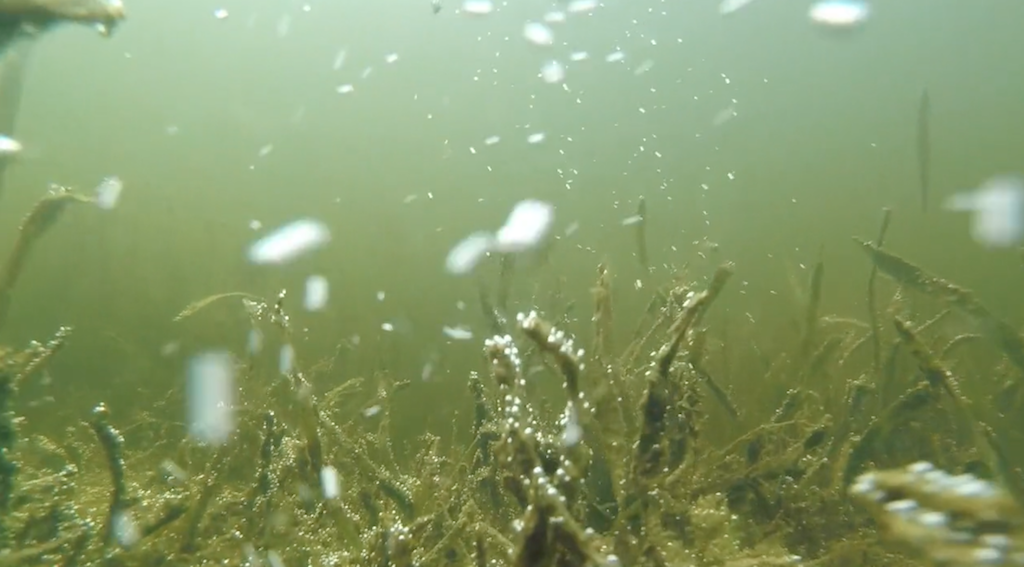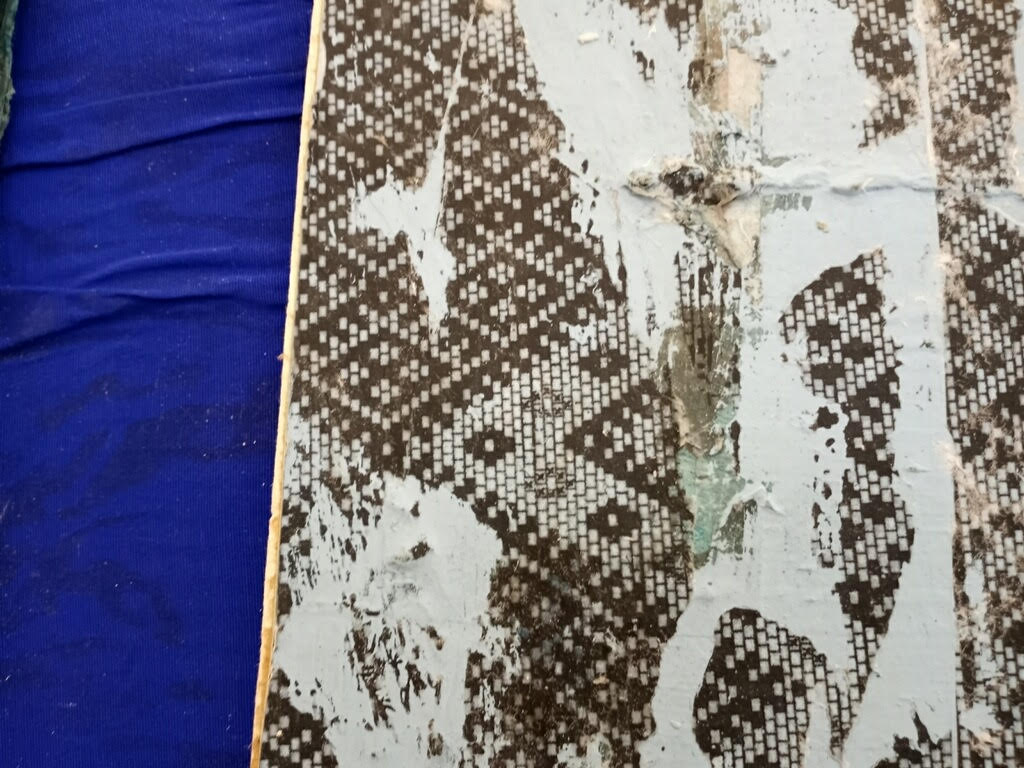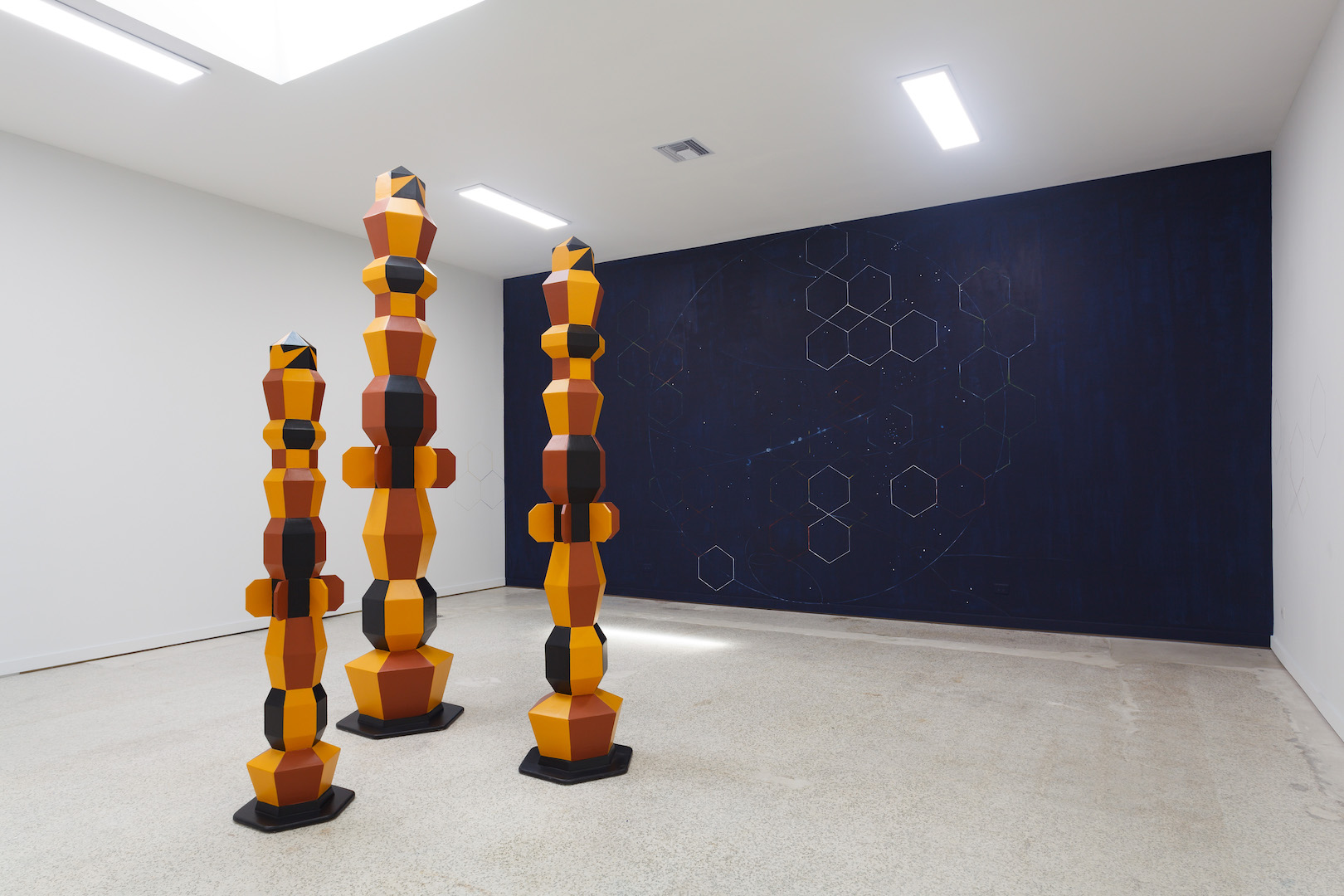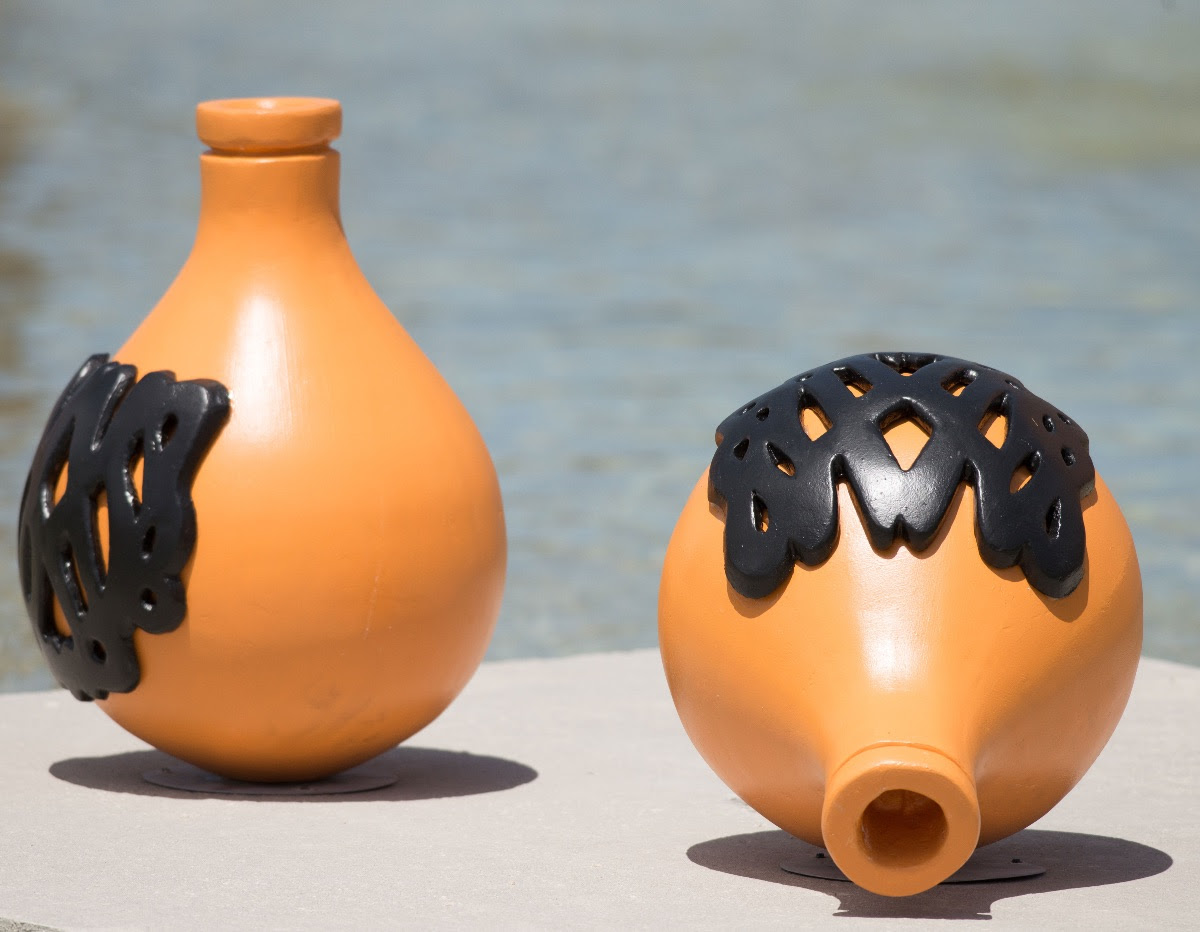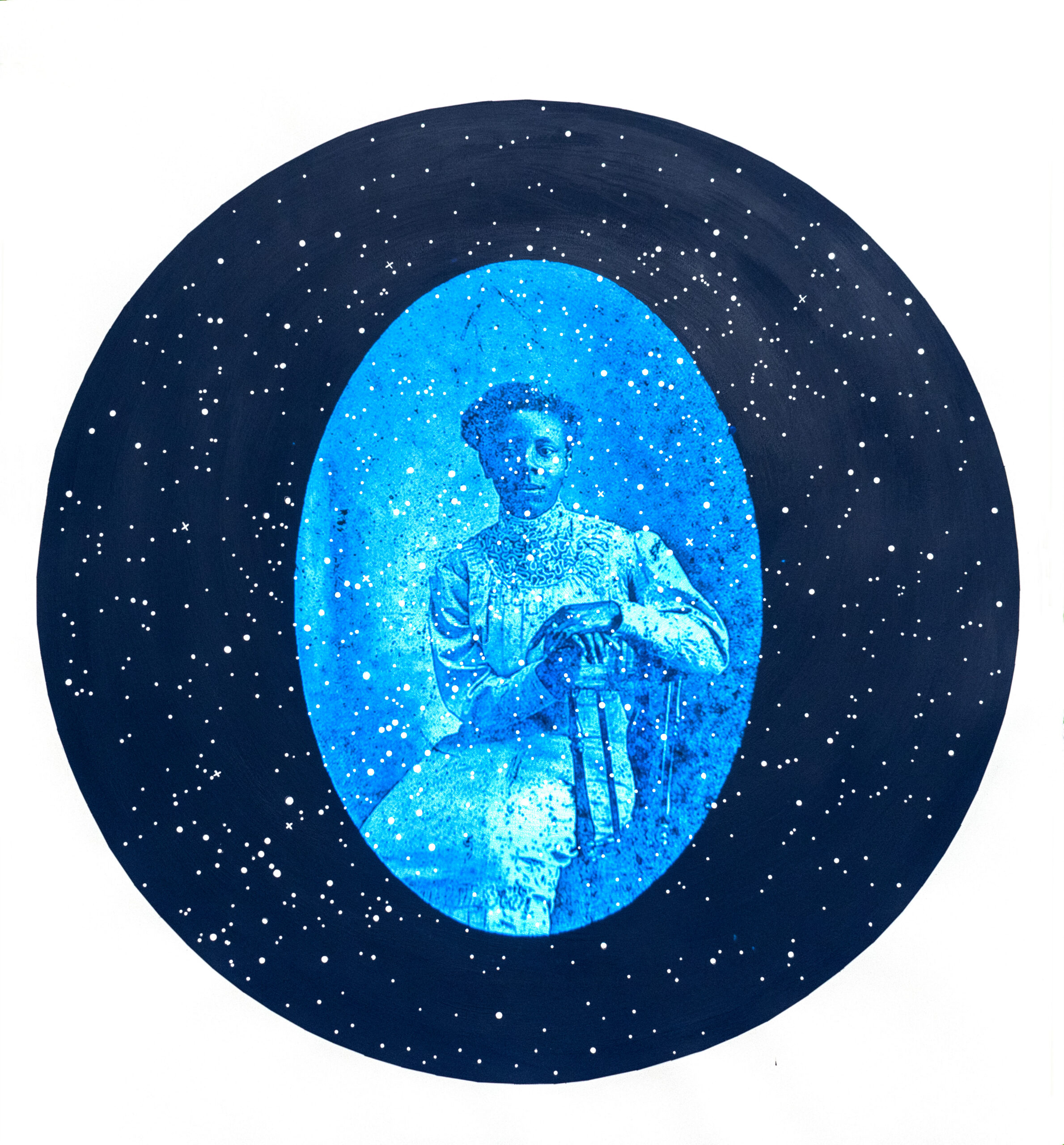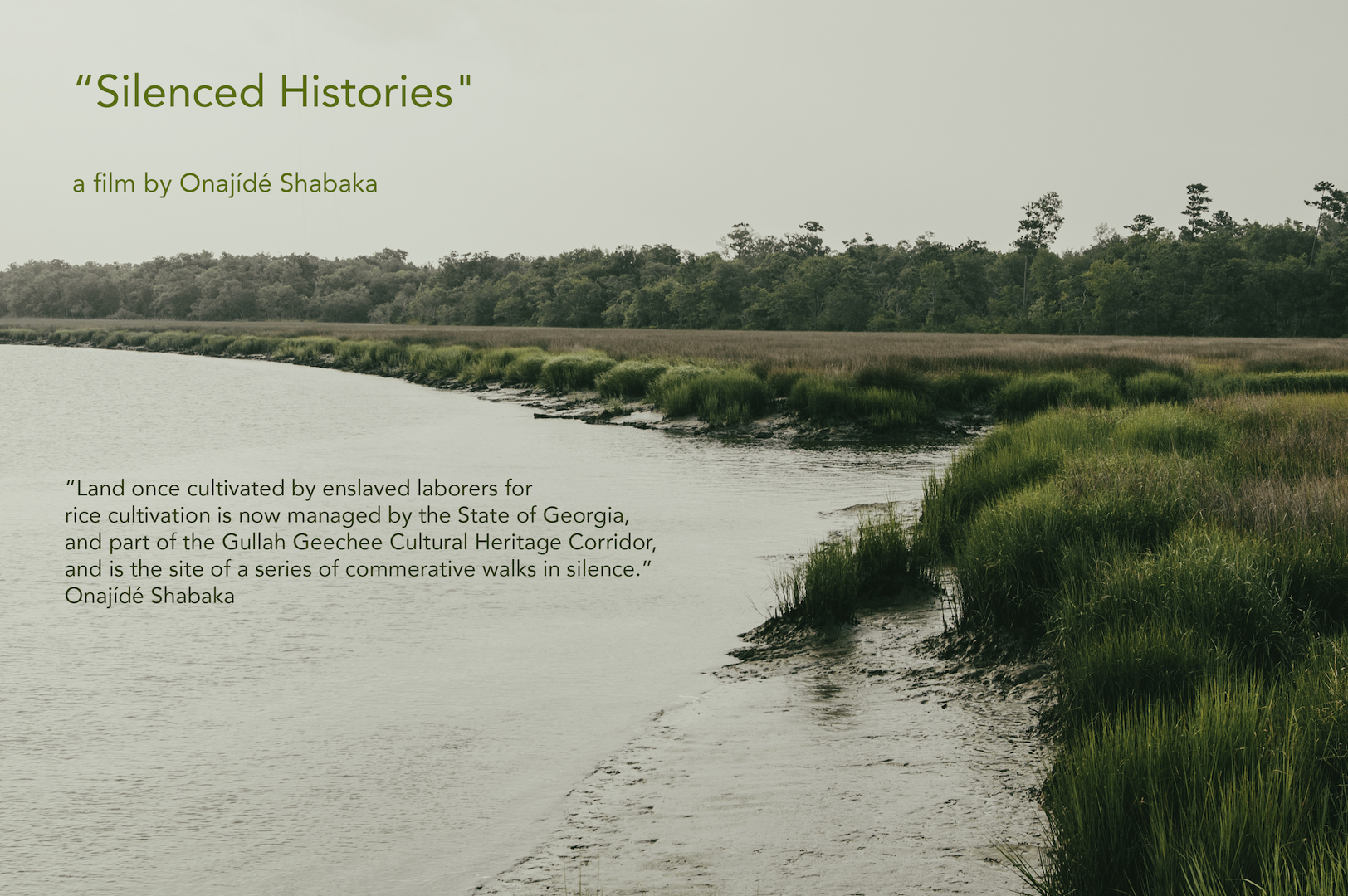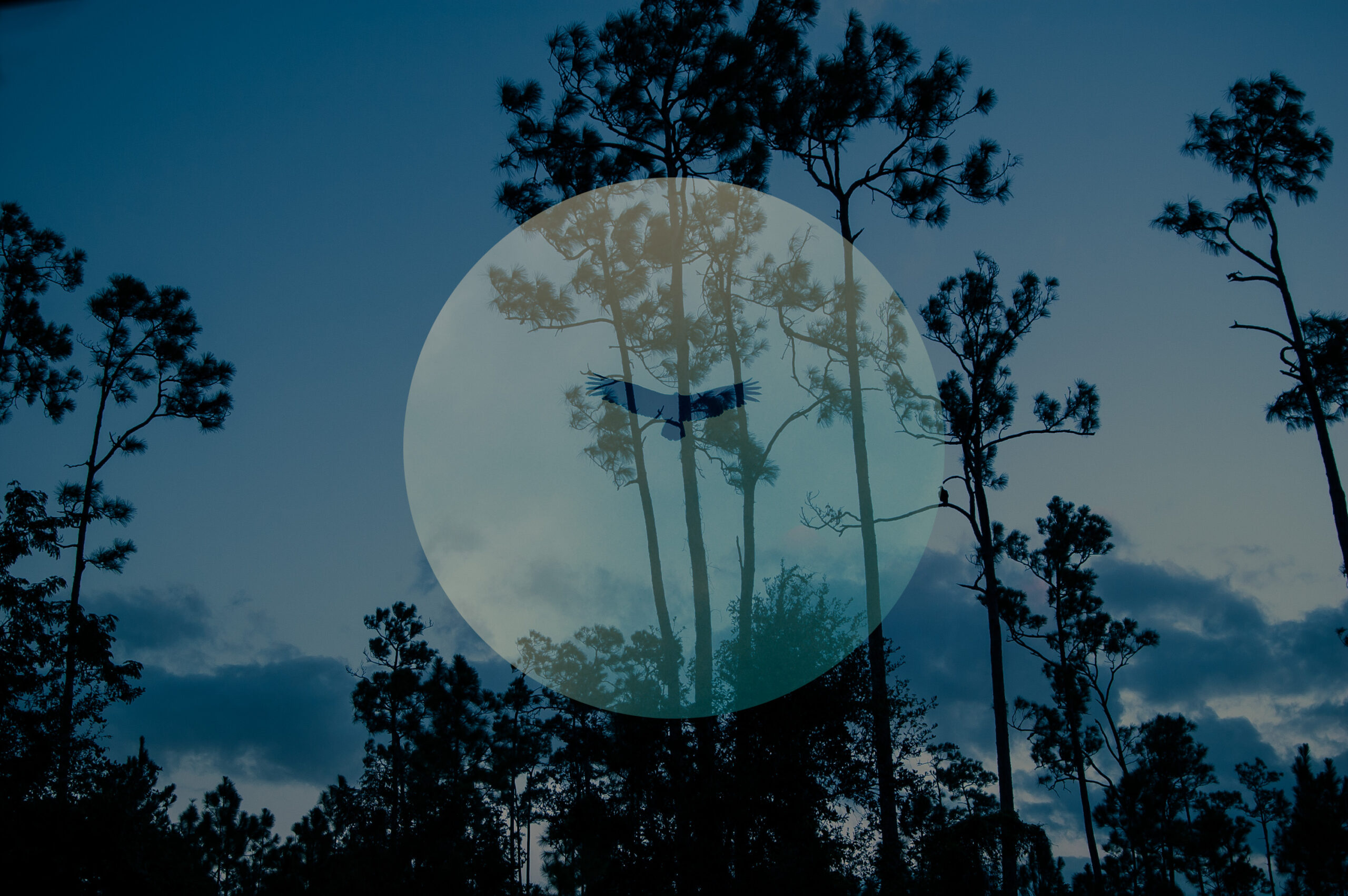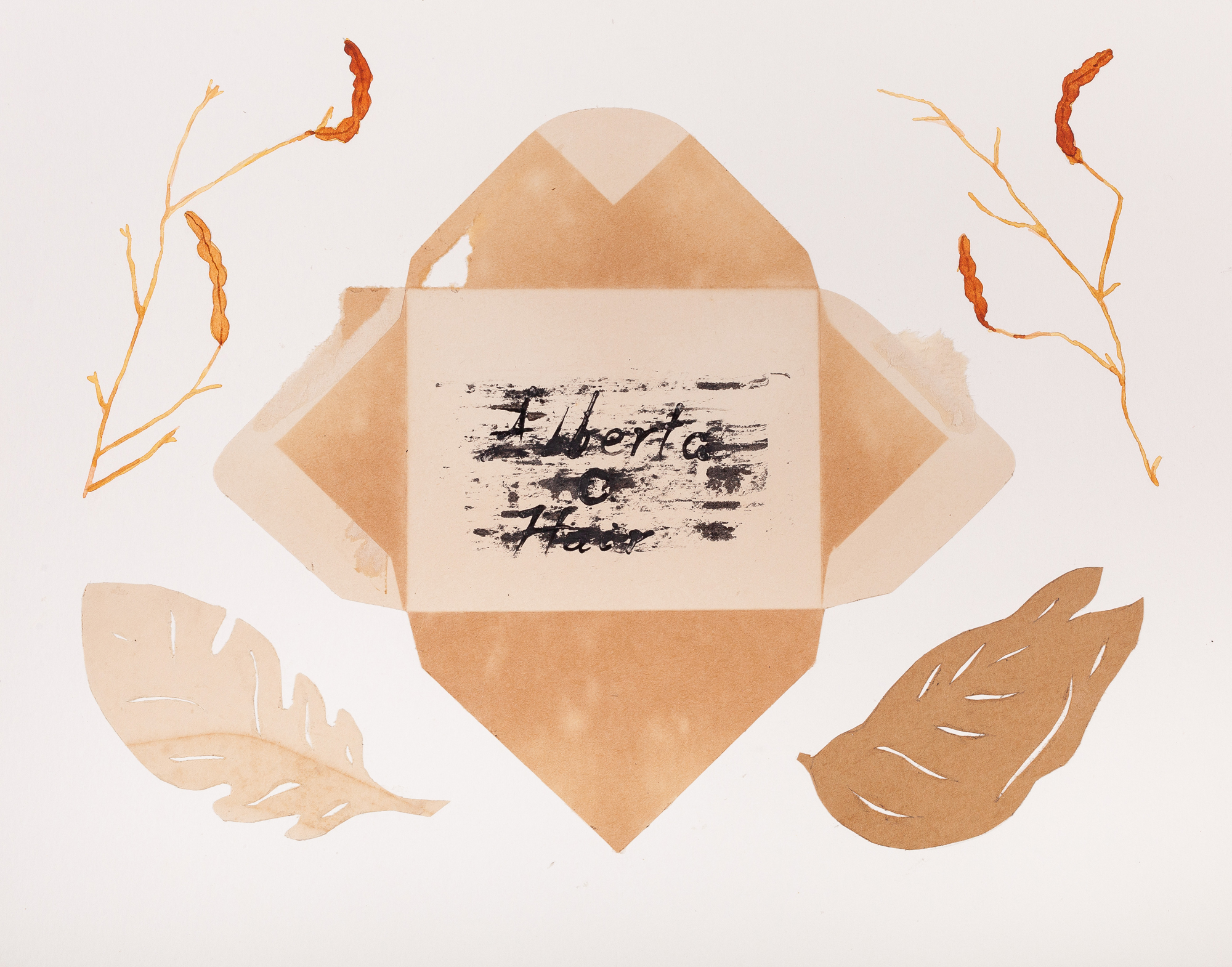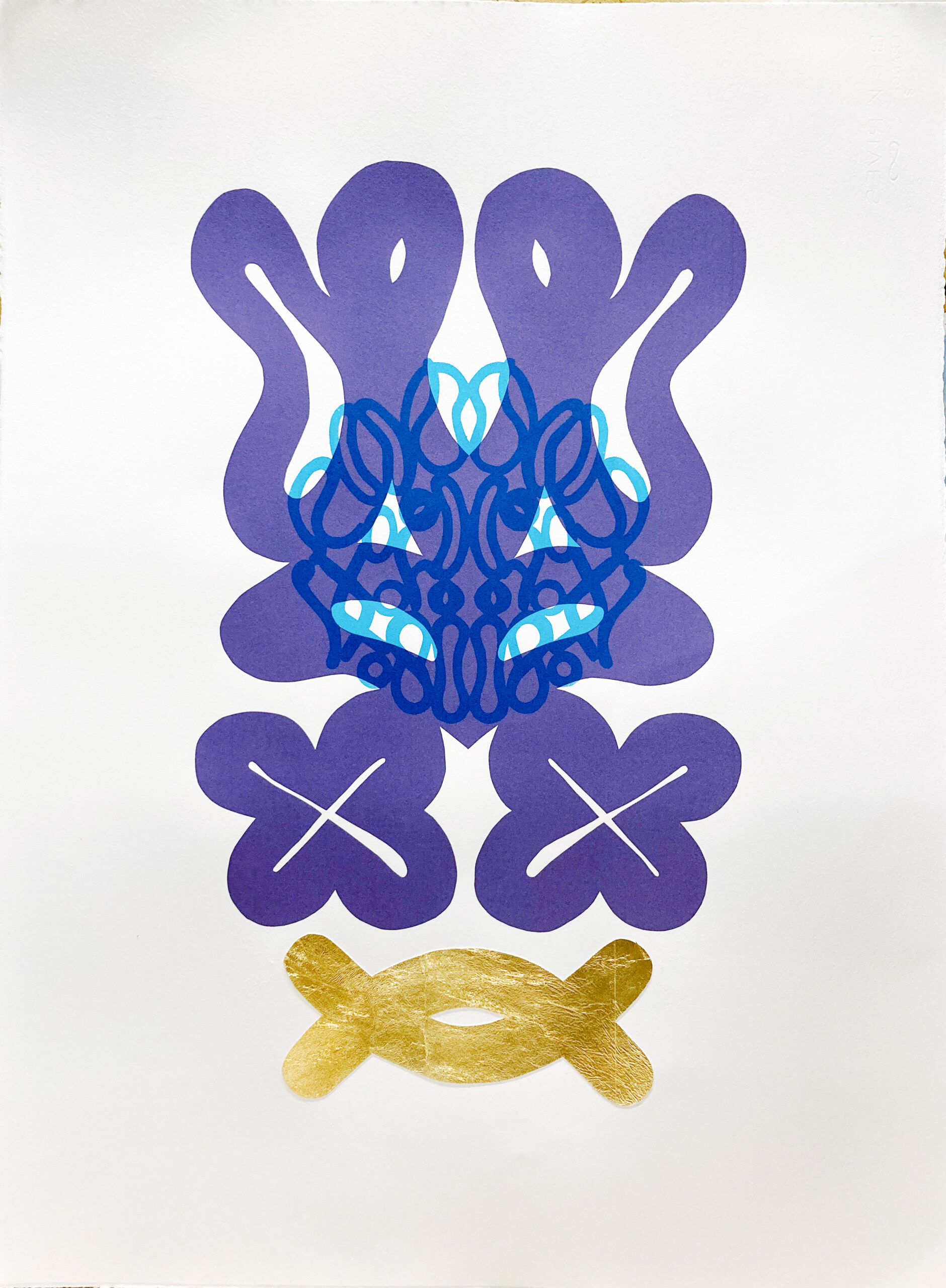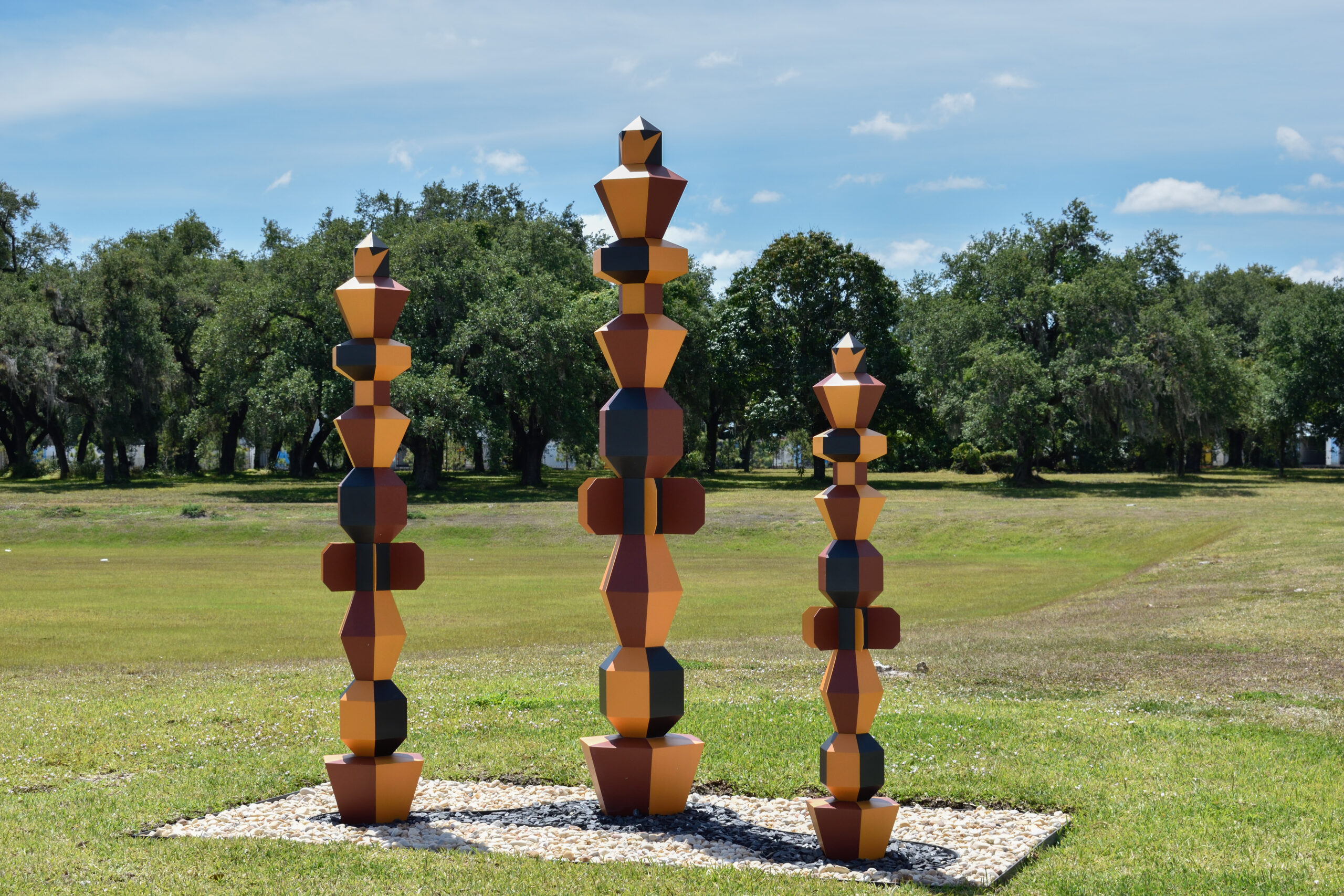News
Onajide Shabaka site specific commission at Museum of Contemporary Art North Miami
April 15, 2022
Onajide Shabaka
Her touch smooths rough waters, 2022
Site specific installation
On View: Plaza at The Museum of Contemporary Art North Miami
Opening Date: April 29th, 2022
Water is central to the new public artwork by Miami-based artist Onajide Shabaka for MOCA’s Art on the Plaza commission. Surrounded by water, a set of objects dialogue with one another. On one side, a large-scale sculpture traces the serpentine forms often found in Shabaka’s work. These patterns—a combination of straight and curved bands, zigzags, circles, and semicircles—originate from pivotal research by the artist in Suriname, a South American Amazon forested country. There, and also in coastal areas of Georgia and subtropical Florida, Shabaka developed an abstraction of natural forms deriving from insect architecture and botanical root systems. The shape becomes a multidirectional conversation of the natural environment’s impact in urban space and the relationship of humans within it.
Coupled with the large-scale sculpture on the adjacent plinth are two tear-drop shaped vessels, which continue the language of serpentine imagery. For Shabaka, the vessels evoke the ancient purpose of transporting water as both a necessity and as a ritual act. As through poured from the vessels, here the serpentine designs function as a kind of map for the flows of water: not as a straight line, but tracing the undulations of its movement, always finding its way despite obstacles. The large serpentine sculpture functions as a macro-view for this natural phenomenon, suggesting gravitational currents that link major water systems such as the Everglades National Park, which provides the drinking water for south Florida. In its component parts, the work articulates a language from nature, and an essential interconnectedness of the world as a whole.
Amanda Sanfilippo Long. 2022
ABOUT THE ARTIST
Onajide Shabaka (Born Cincinnati, OH 1948. Live and works Miami, FL) studied at California College of the Arts and Art Center College of Design and earned his MFA from Vermont College of Fine Arts. Shabaka has participated in numerous international art residencies, some established and others self-made. A selection includes Diaspora Vibe Cultural Arts Incubator (DVCAI) in San Miguel de Allende, Mexico (the artist was the first and only resident at the time); Oolite Arts’ Home and Away program with Anderson Ranch in Aspen, CO; Project Row Houses in Houston, TX and Artist in Residence in the Everglades (AIRIE). These residencies, including the self-made ones, often coincide with an intentional walk, a meditative part of Shabaka’s practice that he frames as performance. Some of these include walks in the Gullah Geechee Cultural Corridor along the coast between Georgia South Carolina, and Florida; Mangrove Walk in Greynolds Park, North Miami Beach, FL; the BWCA, Superior National Forest, Minnesota; and African Rice & Maroon Subsistence Farming Residency, Paramaribo, Suriname.
Shabaka has shown his work in solo exhibitions in South Florida, Houston, TX and Potsdam, Germany, among others. His work has been included in numerous group shows over the years. Of these recent showings include exhibitions at Project Row Houses in Houston, TX; PRIZM Art Fair in Miami; Museum of Contemporary Art of North Miami; Little Haiti Cultural Center in Miami, FL; Locust Projects, Miami, FL; Bridge Red and Under the Bridge, North Miami, FL; the Frost Art Museum, Miami, FL; The NSU Art Museum, Fort Lauderdale, FL; The Franklin, Chicago, IL; Edna Manley College of the Arts in Kingston, Jamaica; Cindy Rucker Gallery, New York, NY; Saltworks, Atlanta, GA;Wayne State University in Detroit, MI; and Emerson Dorsch Gallery, to name a few. He has been the recipient of numerous grants and awards, including, recently, Locust Projects, The Ellies, Oolite Arts, an Art In Public Places sculpture commission for the Carrie Meek Foundation in Opa Locka, FL, and a Wavemaker Grant. His work is widely represented in Florida institutional collections as well as in a strong base of notable private collections.
Shabaka began his artistic career while still in high school in the 1960s and moved to San Francisco, CA because he was drawn to the reputation of the region’s photography scene, typified in the work of Edward Weston, Imogen Cunningham, Ansel Adams, and Minor White. The racist discrimination he faced in the art world there, in the 1970s, led him to change course, pursuing fashion design. He worked with natural fabrics imported from India, Ghana, Senegal, Togo and Mali, and made designs inspired by both Asian and African garment styles. His work had a political dimension; he spoke about how much it meant to him to wear African clothes at that time. He was also a cyclist, racing bicycles in international competitions in the United States, Jamaica, Puerto Rico, the Dominican Republic, Italy, and Florida. It was in Italy that he resolved to make art again. He arrived in South Florida for a job associated with cycling. Around the same time, he visited family in Fort Pierce and liked it there. Its quiet was a contrast to city life, and his family had an interesting history there. His great grandfather, Patrick Wells, had been enslaved in the Carolinas before arriving in Florida a free man. The discrimination and racism he faced in Florida is not known. Eventually, his family would come to own an orange grove, and the family papers became a focal point in Shabaka’s work, as he wove a picture, with his practice, of his perspective on history(ies).
The early parts of his career in Florida include mentorship from the director at the Vero Beach Museum of Art, FL. Bonnie Clearwater has been a consistent supporter since 1994. He enjoyed a friendship with Ed Love (1936-1999), a renowned African American professor of sculpture at Florida State University who had also taught at Howard University. He showed frequently in the Miami Dade Public Library System during Barbara Young’s tenure. He took part in several important group shows, one of African American artists in Florida, curated by Amy Cappellazzo at Miami Dade College. He was one of 21 artists in Next Generation: Southern Black Aesthetic, which was organized by Southeastern Center for Contemporary Art and traveled to four institutions. The exhibition catalog includes essays by Lowery Stokes Sims and Adrian Piper. His photographs of graves in Black cemeteries were included in the traveling exhibition, curated by Robert Farris Thompson (1932-2021), titled Face of the Gods: Art and Altars of Africa and the African Americas, which was shown at the Museum for African Art in New York, NY, and Art Museum at FIU (currently known as FIU Frost)among other institutions. One photograph is pictured in the excellent exhibition catalog, a treasure for its overview of African spiritual practices and their influence on African American art and culture.
Recent shows and opportunities have highlighted his work in artist books, photography and printmaking, resulting in collaborations with IS Projects and Nocturnal Press in Fort Lauderdale, FL, and Extra Virgin Press, Miami, FL. He has worked and traveled with Diaspora Vibe Cultural Incubator a number of times in the last decade.
Onajide Shabaka has given much of himself and his art to the artistic community in South Florida over the years, including service in organizing resources for artist-entrepreneurs, teaching, supporting organizations he believes in, and public programs. This is work that many artists do, but when it has been given over decades, the significance is inestimable. We honor Shabaka for his gifts, his presence, friendship and art.
